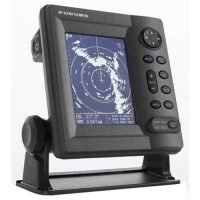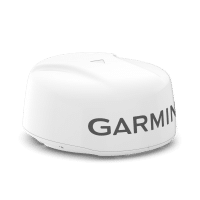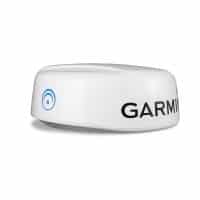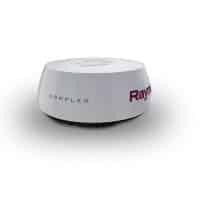Marine Radar
Marine Stand Alone And Networked Radar Systems
Marine radar systems have become an indispensable tool for boat owners and professional mariners alike. These systems provide essential information about nearby vessels, obstacles, and weather, enhancing safety and navigational capabilities on the water. In this article, we will explore the workings of marine radar, its different applications, and popular brands such as Furuno and Garmin, as well as tips for finding a cheap marine radar system for your boat.
(more...)How Does Marine Radar Work?
Marine radar systems work by emitting radio waves and then detecting the reflected waves from nearby objects. The radar’s antenna sends out radio waves in a circular pattern, which bounce back when they encounter an object. The time it takes for the wave to travel back to the radar system is used to calculate the distance to the object, while the direction of the reflected wave determines its bearing. This information is then displayed on a screen, allowing mariners to track the position of nearby vessels, land masses, and other obstacles.
How to Read Marine Radar?
Reading a marine radar display can be intimidating for beginners, but it is essential to understand the basics. The radar screen typically shows a circular area, with your boat at the center. The range rings indicate distances from your vessel, and the orientation of the display corresponds to the heading of your boat.
Objects appear as blips or echoes on the screen, and their position relative to your boat can be determined by their distance and bearing. Moving objects such as other vessels will leave a trail, which can help you assess their speed and direction. Additionally, marine radar systems often include features such as target tracking, alarms for collision avoidance, and overlays for charts and GPS data to improve situational awareness.
What are the top uses of Marine Radar?
Marine radar systems come with a variety of features and uses that can greatly enhance navigational safety and efficiency. Some of the top features and uses of marine radar systems include:
- Collision Avoidance: Marine radar helps identify and track the position, distance, and speed of nearby vessels, allowing mariners to avoid potential collisions. Many radar systems also come with an automatic alarm that alerts users when a potential collision risk is detected.
- Navigation: By providing information about nearby landmasses, coastlines, and navigational markers, marine radar assists in navigating through complex waterways and confined areas. This is particularly useful in poor visibility conditions, such as fog, rain, or darkness.
- Weather Monitoring: Some marine radar systems are capable of detecting and displaying weather patterns, such as approaching storms or squalls. This information can help mariners prepare for changing conditions and avoid potentially hazardous weather.
- Automatic Radar Plotting Aid (ARPA): This advanced feature allows for automatic tracking of multiple targets, calculating their speed, course, and closest point of approach (CPA). ARPA can also predict potential collision points, providing valuable information for decision-making and maneuvering.
- Guard Zone Alarms: Marine radar systems can be set up to create a virtual perimeter around the vessel, known as a guard zone. If any object enters this zone, the system will trigger an alarm, alerting the crew to potential hazards or intruders.
- Overlays and Integration: Modern marine radar systems can be integrated with other navigational tools, such as GPS and electronic chart systems. This allows for the overlay of radar data on top of charts or satellite imagery, providing a more comprehensive understanding of the surrounding environment.
- Target Tracking: Marine radar systems can track specific targets, such as other vessels or navigational markers, displaying their speed, course, and distance from your vessel. This feature can help mariners maintain situational awareness and make informed decisions during navigation.
- Dual Range Display: Some marine radar systems offer a dual-range display, allowing users to monitor both short and long-range targets simultaneously. This feature can be useful for keeping track of both nearby hazards and distant objects of interest.
- Sector Blanking: This feature allows users to suppress radar signals from a specific direction, eliminating unwanted reflections or interference from nearby structures or vessels.
Ease of Use: Modern marine radar systems are designed with user-friendly interfaces, featuring intuitive menus, touchscreen controls, and customizable display options. This makes it easier for mariners to access and interpret radar data, even during challenging situations.
These top features and uses of marine radar systems demonstrate their importance for safe and efficient navigation, providing valuable information about the surrounding environment and enhancing situational awareness for mariners.
Popular Marine Radar Brands
Furuno Marine Radar:
Furuno is a well-known brand in the marine electronics industry, offering a wide range of marine radar systems. Their products are known for their reliability, performance, and innovative features. Furuno’s radar systems cater to various users, from recreational boaters to commercial vessels, and are available in different configurations, including standalone and integrated systems.
Garmin Marine Radar:
Garmin is another popular brand in the marine electronics market, offering marine radar systems that are both user-friendly and high-performing. Garmin’s radar systems are designed for seamless integration with their other marine electronics products, such as chartplotters and GPS units. They offer an extensive lineup of marine radar systems, with options suitable for small boats to large yachts.
Marine radar systems are crucial for safe and efficient navigation on the water. Understanding how marine radar works and how to read the display is vital for mariners of all experience levels. With brands such as Furuno and Garmin offering a wide range of marine radar systems, there are options available to suit any budget and vessel size. By investing in a marine radar system, you will enhance your boating experience, ensuring safe navigation and heightened awareness of your surroundings.
Frequently Asked Questions about Marine Radar
Should I buy cheap marine radars?
While marine radar systems can be pricey, there are affordable options available for those on a budget. To find a cheap marine radar, consider looking for discounts, sales, or used equipment from reliable sources. Additionally, choose a system that meets your specific needs without unnecessary features, as this can help to reduce costs.
What type of Marine Radar should be used for boats?
There are various marine radar systems available for boats, ranging from small recreational vessels to large commercial ships. When choosing a marine radar for your boat, it is essential to consider factors such as the range, antenna size, and display type. Smaller boats generally require a lower range and a compact antenna, while larger vessels may need more powerful radar systems with greater range and larger antennas.
How far can marine radar see?
The range of marine radar systems depends on several factors, including the system’s power, antenna size, and atmospheric conditions. In general, marine radar systems can see objects at distances between 0.5 nautical miles (nm) and 96 nm or more.
Small recreational boats typically use marine radar systems with a range of around 16 to 24 nm, while larger commercial vessels and ships may have radar systems with a range of up to 96 nm or more. However, it is important to note that the actual detection range of a radar system may be affected by factors such as the height of the radar antenna, the size and composition of the target object, and weather conditions like precipitation or atmospheric ducting.
In addition, the Earth’s curvature also limits the radar’s ability to see distant objects, especially those close to the water’s surface. As a rule of thumb, radar horizon can be calculated using the following formula:
Radar horizon (nm) = 1.22 * √(antenna height in feet)
For example, if the radar antenna is installed at a height of 15 feet above the water’s surface, the radar horizon would be approximately 4.7 nm. This means that beyond this distance, the radar system may not be able to detect small objects or vessels near the water’s surface.
It is essential to understand the limitations and capabilities of your specific marine radar system to make the best use of its features and ensure safe navigation.
Showing all 7 results
-

Furuno 1623 Silver LCD 2.2Kw Radar With 15″ Radome
$ 1,989.95 CAD Add to cart -

Furuno 1815 4kW Transmitter, 36 NM Radar System with 8.4″ Color LCD display and 19″ Radome
$ 3,195.00 CAD Add to cart -

Garmin GMR Fantom 18x Marine Radar
$ 3,189.99 CAD – $ 3,339.99 CAD Select options This product has multiple variants. The options may be chosen on the product page -
Garmin GMR Fantom 24 Radar With MotionScope
$ 3,779.99 CAD Add to cart -
Icom Marine Radar Color LCD 36 NM 4Kw
$ 2,799.95 CAD Add to cart -
Lowrance HALO 24 Radar with Pulse Compression Technology
$ 4,339.00 CAD Add to cart -
Raymarine Quantum 2 CHIRP Radar With Doppler Collision Avoidance Technology
$ 3,239.99 CAD Add to cart






